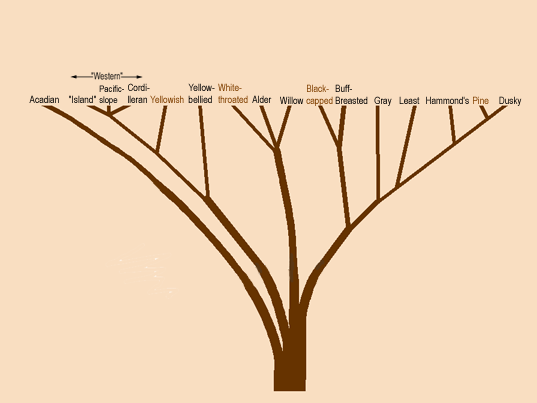
A tree of this sort tells us how (genetically) similar each species is to each other. From genetic similarity we infer genealogical similarity. For example, if you go down the tree from the twig for the Buff-breasted Flycatcher to the first branching point (called a "node"), then go back up, you find the Black-capped Flycatcher. This means they are each other's closest relatives, or "sisters." By the same token, Alder and Willow Flycatchers are sister species, although the White-throated Flycatcher is almost as closely related to both. Sister species share a common ancestor, which is represented by the node joining their branches. It is the branching pattern, the topology of the tree, that contains the genealogical information. The lengths of the branches are not necessarily proportional to the time since two branches split.
The genus Empidonax is divided into
four distinct lineages, represented by the
four branches you see on the tree.
These four groups of species have distinctive
coloration, habitat, nests, eggs, and vocalizations. The following pages show how different
these four branches are.
Click here to continue the story of Empidonax evolution.